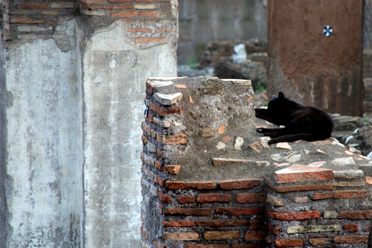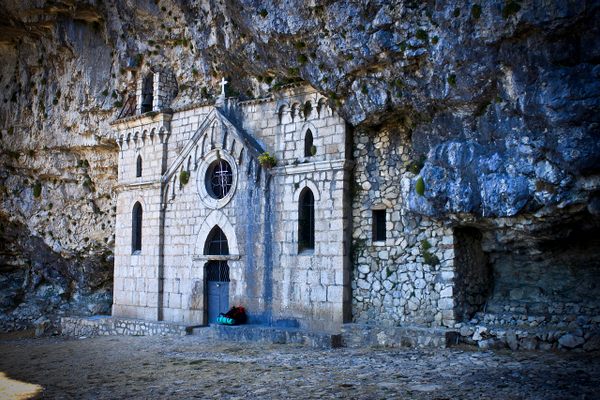Abbazia di Valvisciolo (Valvisciolo Abbey)
Knights Templar are visible inside this stunning Cistercian abbey.
The beautiful abbey of Valvisciolo (from the Italian “Valle dell’Usignolo”, Valley of the Nightingale) can be found between the gardens of Ninfa and the medieval town of Sermoneta, set against a backdrop of central Italy’s Lepini mountains.
Though we know very little about the earliest history of the abbey, it dates back to at least the 12th century, if not earlier. It was founded by Greek Basilian monks, and supposedly occupied by the Knights Templar in the 13th century. Legend has it that the Church’s architraves broke when the Templar Grand Master, Jacques de Molay, was burnt at the stake in 1314 (the Order had been suppressed and its members persecuted).
Traces of the abbey’s Templar past are believed to be subtle but very significant. A small templar cross is carved on the rose window on the façade, and the crack in the architrave is visible just underneath. More templar crosses have been spotted inside the church and on the ceilings of the cloister.
But one of the the abbey’s most interesting features is a very small carving on the wall that you walk past to enter the cloister. Sheltered by a transparent screen, you will find an unusual palindromic SATOR inscription. Its shape is not square, like those found elsewhere, but instead five concentric circles, crossed by five lines that divide the circles into five sectors that contain five letters. The palindrome is read in the following way in any direction: Sator Arepo Tenet Opera Rotas. The exact meaning of the inscription is unclear.
If you look carefully, you might also spot several carvings of Solomon’s knot (which has been interpreted as a metaphor of one’s esoteric journey in search of the self and of truth) and of the omphalos, the sacred center of the world. All of these carvings were discovered during restorations of the cloister and they might provide a mysterious testimony of the presence of the Knights Templar and of their spiritual symbolism.
Today, the Romanesque-Cistercian style abbey is home to Cistercian monks. The church has three naves divided by pillars and columns and bare walls, as the Cistercian tradition that avoids architectural splendor to emphasize the importance of the spiritual over the material.
Know Before You Go
The abbey is open from 9 a.m. to 12 p.m. and from 3 p.m. to 5:30 p.m. in the winter, and from 9 a.m. to 12:30 p.m., and 3:30 p.m. to 6:30 p.m. in the summer.
Plan Your Trip
The Atlas Obscura Podcast is Back!
























Follow us on Twitter to get the latest on the world's hidden wonders.
Like us on Facebook to get the latest on the world's hidden wonders.
Follow us on Twitter Like us on Facebook